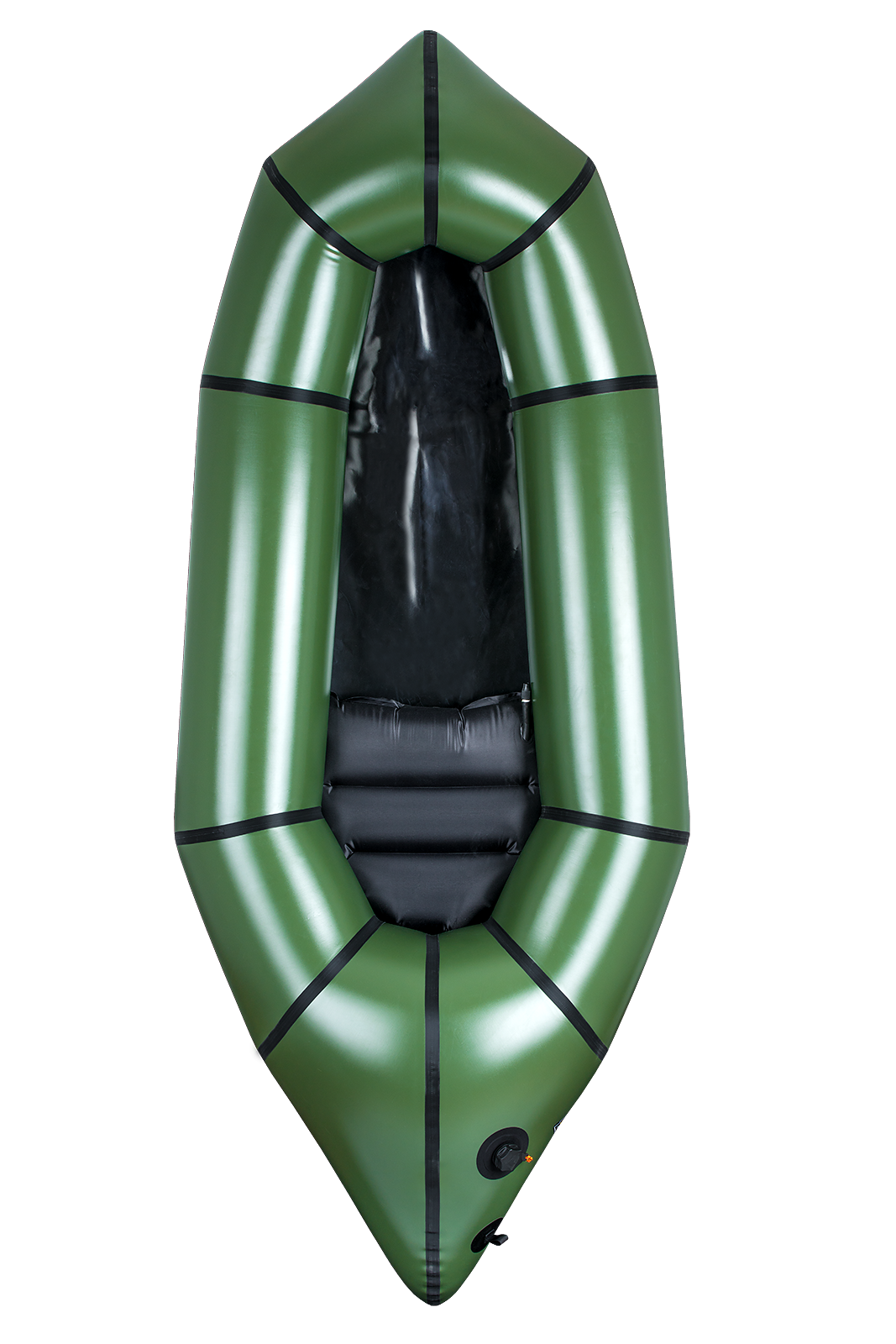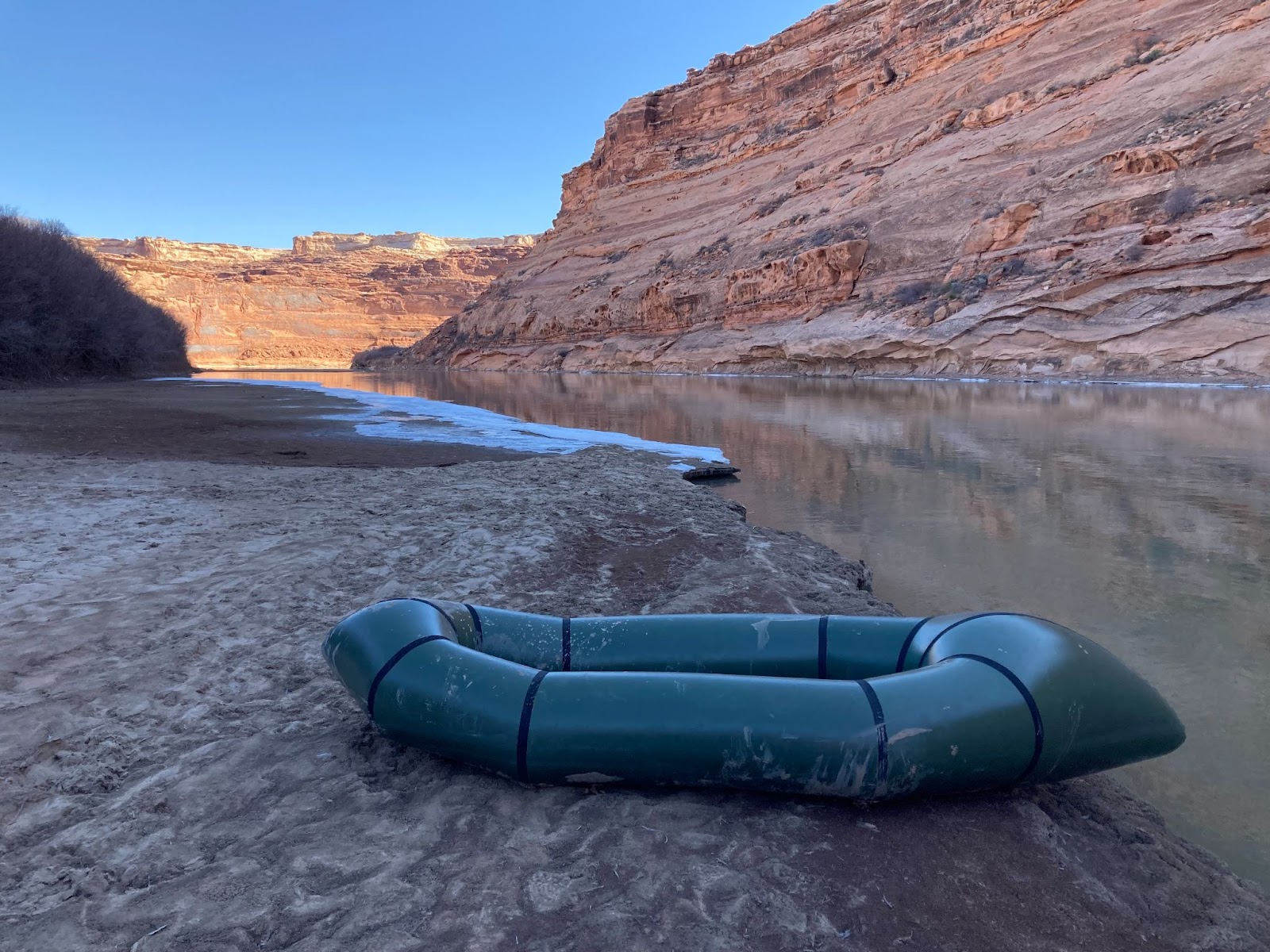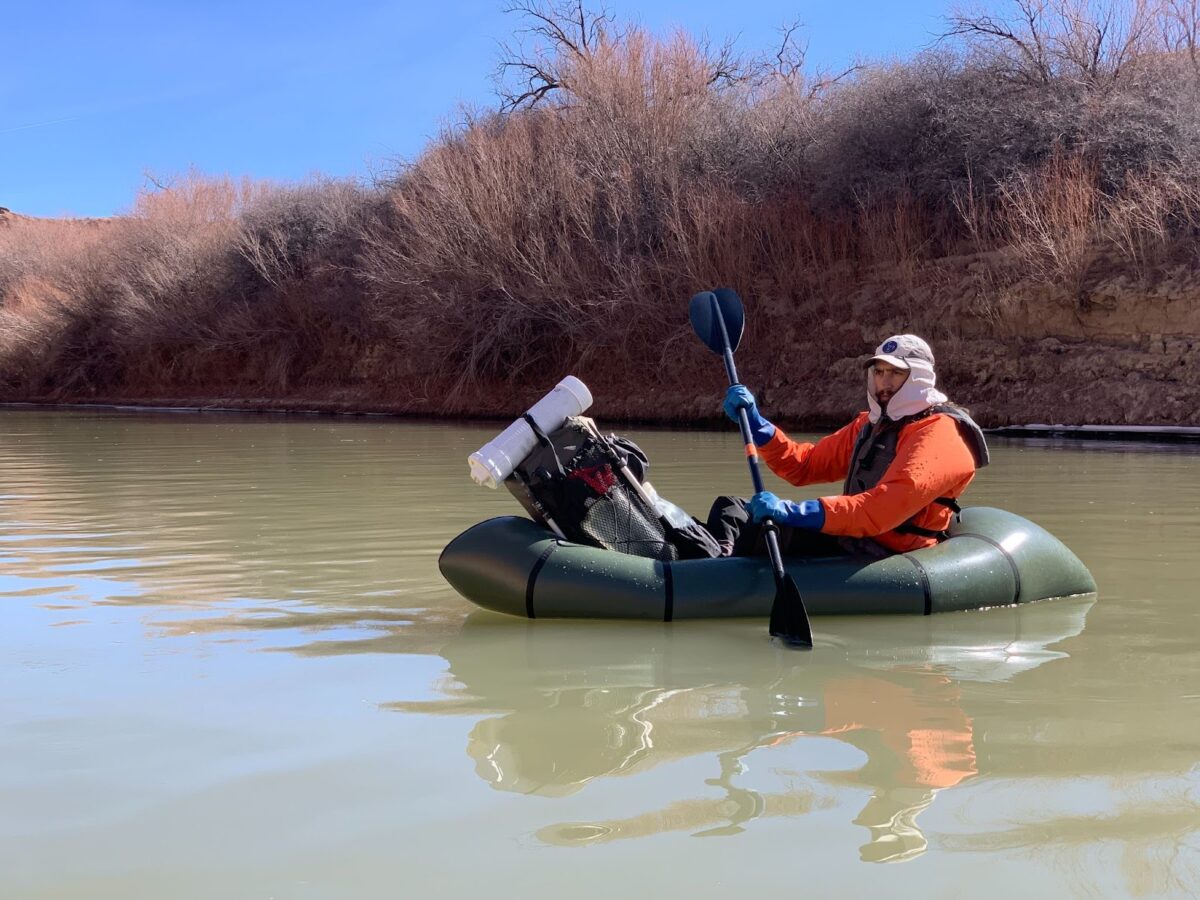Introduction
The updated Alpacka Scout (3.8lb / 1.7kg, MSRP $695) is a new version of a packraft that was last updated in 2019. This new iteration addresses several performance and design issues in the 2019 and 2017 versions. While the new Alpacka Scout is slightly heavier than the previous version, the performance upgrades are well worth it. See our previous Alpacka Scout review here.
The 2022 Alpacka Scout packraft will appeal to any packrafter that needs a light and durable packraft capable of performing well in flat water and gentle (~Class 1) whitewater.

Do you have experience with the Alpacka Scout, or do you want to see reviews from our members? Search them here or submit your own review »
Table of Contents
Table of Contents • Note: some sections may only be available to Premium or Unlimited Members.
- Introduction
- Table of Contents
- Highlights
- Review context
- The history of the Alpacka Scout Packraft
- Features
- Specifications
- Description of field testing
- Performance analysis
- Hull design & (new) shape
- Paddling performance
- Fit & size
- Durability
- Weight
- Packed Size
- Finish quality & aesthetics
- Price
- Commentary
- Compared to…
- Alpacka Scout: strengths
- Alpacka Scout: limitations
- Who should consider the Alpacka Scout packraft
- Who should not consider the Alpacka Scout packraft
- Recommendations for improvement
- Where to buy
- Review rating: Highly Recommended
- Learn More
Highlights
- larger than previous Alpacka Scout packraft iterations
- many paddlers up to six feet two inches (188 cm) tall can extend their legs straight
- now with Alpacka Classic Hull design
- improved paddling performance, especially in gentle (~Class 1) whitewater – it’s possible to edge the boat while paddling
- very light for a packraft at 60.8 ounces (1.7 kg)
Review context
The Alpacka Scout packraft is a boat I have always wanted to believe in. I’ve carried larger boats – most in the 6.5-pound (3 kg) range – through long, dry canyons and over big mountain passes, often wishing for something lighter. I’m sure many Backpacking Light readers have had similar experiences.
In the past, when I’ve tried to supplant my larger boats with previous versions of the Scout, only my walking experience has improved, not my paddling experience. The new Alpacka Scout packraft seeks to balance those scales. It’s still light in my pack – just like previous models – but now it performs well on the water too.
This Alpacka Scout review is based on my experience with the updated Alpacka Scout in various paddling conditions. Read more about our types of reviews here.

The history of the Alpacka Scout Packraft
To get the most out of this Alpacka Scout review, it is crucial to understand the Scout’s previous design iterations.
The Alpacka Scout packraft has undergone many changes over the years, most variations hinting at high performance but never quite achieving it – in my opinion. The first iteration of the Alpacka Scout packraft was shaped a little like the original Alpacka Classic with its symmetrical cockpit but with an extended stern to balance the weight. The hull was pretty much flat, meaning it sat in the water a little like an inner tube.
This version was constructed of the same 210d material as the Alpacka Classic but had a slightly thinner floor. This original Scout weighed around 3.5 pounds (1.6 kg) but was small and sluggish. It excelled at river crossings and canyoneering but was difficult to maneuver in quicker water.

In 2017, Alpacka took roughly the same design and gave it lighter tube material (a lightweight version of its 210 denier nylon). This lightened up the whole package, but the performance remained mostly unchanged. The boat still sat flat in the water, and the bow would dig in like a snowplow when a pack was either in the cockpit or strapped atop the tubes.
I owned the 2017 Alpacka Scout (the red boat in the photo above) and used it on several multiday flatwater trips and Class I+ perennial creeks that cut through the Colorado Plateau. I tolerated it because it was light, but I never loved it. Ryan Jordan tested this version of the Scout, and you can watch his video review here:

In 2019, Alpacka Raft made some questionable tweaks to an already insufficient design, leaving many of us in the packrafting community completely baffled. It shrunk the side tubes and basically stuck two Scout sterns together. This boat looked a little like a shortened version of the old Curiyak, which was designed for bikepacking. This boat accommodated heavier packs on the bow but retained all the handling and sluggishness issues of the previous version.
Four years later, Alpacka Raft has completely redesigned the Scout packraft. It is now shaped like a Classic but uses 10-inch (25 cm) instead of the 11.7-inch (30 cm) tubes on the Classic. (In the above photo, the green boat is the new Scout and the blue boat is a medium Classic.)
The updated Alpacka Scout has an extended stern, but it is not as long as the stern of the Classic. Its stern appears to be proportionally about the same length as what I might call the “second generation” Classic, which ran from about 2010 to 2013. (The Classic was given an even longer stern in about 2014.) The Alpacka Scout’s bow is now upturned as well, just like the Classic’s. In short, you can think of the Alpacka Scout as a shrunken Classic constructed of slightly lighter tube material. This redesign increases the overall paddling capabilities of the Scout immensely with a minimal weight penalty.
Features
- hull design based on the successful Alpacka Classic hull
- 10-inch (25 cm) tube diameter
- Scout Seat included
- 1 stern grab loop and 1 seat toggle
- additional attachments available through Alpacka’s Custom Lab (recommend four bow grab-loops)
- temper assist valve for inflation and deflation
- open cockpit configuration
- includes inflation bag, stuff sack, and basic repair kit
Specifications
- exterior length: 86.25 inches (219 cm)
- exterior width: 34.25 inches (87 cm)
- interior length: 46.25 inches (117 cm)
- interior width: 14.25 inches (36 cm)
- weight including seat: 60.8 ounces (1.58 kg)
- packed size: 12 x 6.25 inches (30 x 16 cm)
- max capacity: 250 pounds (113.39 kg)
- materials: proprietary lightweight 210-denier high count nylon hull and 420-denier nylon floor
- country of manufacture: USA
- MSRP: $695
Description of field testing
I used the new Alpacka Scout packraft in several different environments to get a good idea of its breadth of ability. I took day trips down the Provo River, which is swift but pretty shallow. There, I learned that the Scout is capable of edging – pushing one tube down into the water so that the river can more easily grab the boat.
I also paddled the shore of the threatened Great Salt Lake, inspecting microbiolites from the packraft. Then, in February, I paddled a twelve-mile section of Labyrinth Canyon in southern Utah, easily keeping up with my friends paddling Alpacka Classics.
Also in February, I took the Scout on an early-season Dirty Devil run, a perfect test for this boat. I carried the Scout about 25 miles (40 km) across the Utah desert to get to the put-in, allowing myself to get a feel for how it carried in a pack.

Environmental conditions
- Provo River: Class I+
- Green River: Class I flatwater
- Great Salt Lake: Open water crossing
- Dirty Devil River: Class I+
Water was cold in each of these cases, and the air temperature was often cold as well. I wore a rain jacket and pants on the Provo River and the Great Salt Lake. I wore a dry suit on the Green River and Dirty Devil River. Because this boat has an open configuration, some protection is needed from paddle drips and splashes. At the end of this article, I will compare the Alpacka Scout packraft to the new Alpacka Refuge, which is an even higher-performing cold-water boat.
How many user days?
- 10
Performance analysis
For this Alpacka Scout packraft review, I measured performance based on the following criteria:
- hull design & (new) shape
- paddling performance
- fit & size
- durability
- weight
- packed size
- finish quality & aesthetics
- price
Member Exclusive
A Premium or Unlimited Membership* is required to view the rest of this article.
* A Basic Membership is required to view Member Q&A events




Home › Forums › Alpacka Scout Review